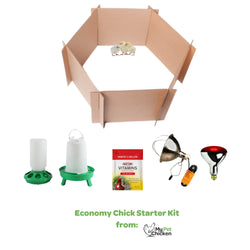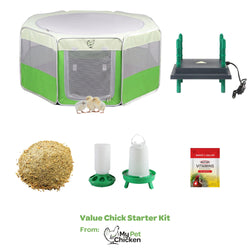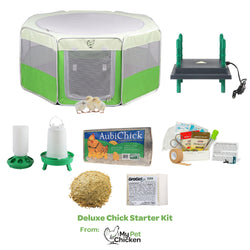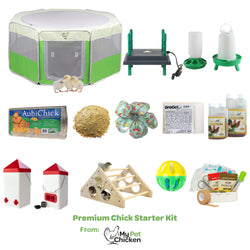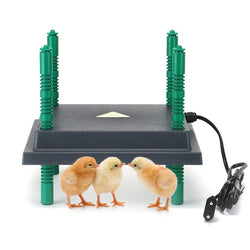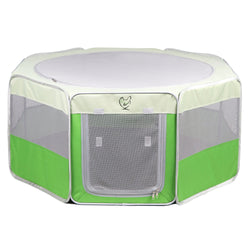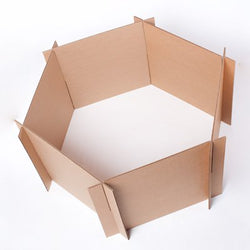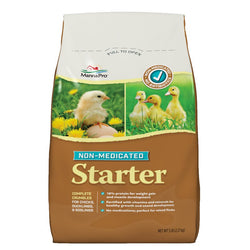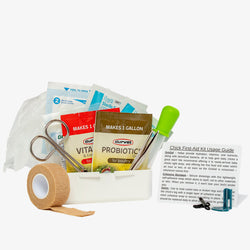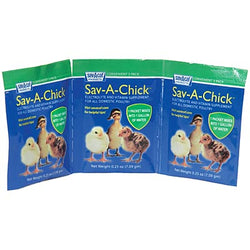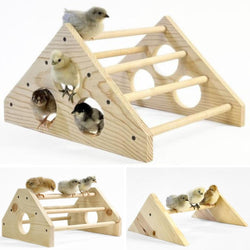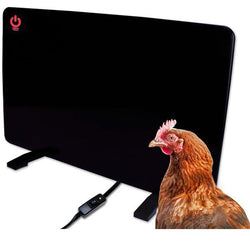My chicken has a lump or tumor on her chest--what should I do?
Back to blog
You are probably seeing your chicken's crop. A chicken's crop is a part of her digestive system, and is located on her breast. You can see it in the illustration below, closest to the front. When it fills up with food, it may stick out a little bit.

It will be smaller in the morning before she has eaten, and larger after she is full. The crop (or "craw") holds food before it goes further down their digestive tract. Chickens basically store food in their crops; it is like a chicken lunchbox. Then it moves into the stomach or proventriculus and gets soaked with digestive juices before finally getting "chewed" in the gizzard.

The gizzard chews food by using small stones, or grit, to grind the food up. Chickens need grit because they don't have teeth. Chick starter is typically milled finely enough so that baby chicks don't usually need grit unless they're eating something other than starter. Chicks will need grit once they begin eating treats and other foods--for example, if they're foraging in the yard. So the message here is: you probably shouldn't worry at all. Chicks fill up their crops because they grow fast and eat a lot relative to their size. But sometimes there IS cause for concern.
An impacted crop can happen if she doesn't get enough grit or gravel to digest her food, or if you feed her long strands of grass or hay that are too fibrous for her system to handle. Occasionally it may happen in baby chicks if they try to eat their bedding before they figure out what is food and what is not. Grass is a nice treat for adult chickens when they eat it on their own, but keep in mind that a foraging chicken will eat only small pieces, not long strands that can get wound up into a ball in her crop! If that happens, other food won't pass, and she will need attention, or she could starve.
Another thing you can do in terms of prevention is offer probiotics suitable for chickens. Probiotics help the digestive tract stay healthy. If you do have a hen with impacted crop, getting her to a veterinarian is ideal. However, you can try to treat her at home--carefully!--as minor impactions can sometimes be cleared that way.
More on how to prevent impacted crop

This baby chick has been eating a lot. Look at that full crop!
IMPORTANT: Do NOT expel the oil forcefully. Do NOT shoot it into the back of her throat, as you may accidentally get it into her lungs. Instead, place it drop by drop at the back of her mouth, and allow her to swallow it.
Now, wait 15 - 20 minutes to allow the oil to reach and suffuse the impaction.
Finally, gently massage the crop. Be VERY GENTLE. You don't want to force the contents of her crop up into her throat--again: she could aspirate it (breathe it) and suffocate or get sick. Just gently massage. The oil can sometimes help the mass pass.
You can do this treatment two or three times throughout the day: Administer a few drops of oil, wait, gently massage. If the mass doesn't pass by the next day, you'll need to get her to a vet. Unfortunately, sometimes surgery is necessary when the impaction is too large to make it through her digestive system.

It will be smaller in the morning before she has eaten, and larger after she is full. The crop (or "craw") holds food before it goes further down their digestive tract. Chickens basically store food in their crops; it is like a chicken lunchbox. Then it moves into the stomach or proventriculus and gets soaked with digestive juices before finally getting "chewed" in the gizzard.

The gizzard chews food by using small stones, or grit, to grind the food up. Chickens need grit because they don't have teeth. Chick starter is typically milled finely enough so that baby chicks don't usually need grit unless they're eating something other than starter. Chicks will need grit once they begin eating treats and other foods--for example, if they're foraging in the yard. So the message here is: you probably shouldn't worry at all. Chicks fill up their crops because they grow fast and eat a lot relative to their size. But sometimes there IS cause for concern.
Impacted Crop
If the lump doesn't change in size or is hard all the time (don't press too much, because you can force the food back up into your chicken's mouth and cause her to aspirate her food--very dangerous!), your chicken might have an impacted crop.An impacted crop can happen if she doesn't get enough grit or gravel to digest her food, or if you feed her long strands of grass or hay that are too fibrous for her system to handle. Occasionally it may happen in baby chicks if they try to eat their bedding before they figure out what is food and what is not. Grass is a nice treat for adult chickens when they eat it on their own, but keep in mind that a foraging chicken will eat only small pieces, not long strands that can get wound up into a ball in her crop! If that happens, other food won't pass, and she will need attention, or she could starve.
How to prevent impacted crop
Be sure to offer gravel or grit if your chicken has begun eating food other than chick starter. If your chickens free range, they will probably pick up grit, gravel, or small stones on their own, but we usually recommend providing extra just in case. It's inexpensive, and it doesn't get stale or go bad, so it just makes sense.Another thing you can do in terms of prevention is offer probiotics suitable for chickens. Probiotics help the digestive tract stay healthy. If you do have a hen with impacted crop, getting her to a veterinarian is ideal. However, you can try to treat her at home--carefully!--as minor impactions can sometimes be cleared that way.
More on how to prevent impacted crop

This baby chick has been eating a lot. Look at that full crop!
Home treatment for impacted crop
Take an eyedropper and fill it with some edible oil like vegetable or olive oil. With assistance from someone else, drop the oil---a few drops, maybe a quarter of a teaspoon---into the back of her mouth.IMPORTANT: Do NOT expel the oil forcefully. Do NOT shoot it into the back of her throat, as you may accidentally get it into her lungs. Instead, place it drop by drop at the back of her mouth, and allow her to swallow it.
Now, wait 15 - 20 minutes to allow the oil to reach and suffuse the impaction.
Finally, gently massage the crop. Be VERY GENTLE. You don't want to force the contents of her crop up into her throat--again: she could aspirate it (breathe it) and suffocate or get sick. Just gently massage. The oil can sometimes help the mass pass.
You can do this treatment two or three times throughout the day: Administer a few drops of oil, wait, gently massage. If the mass doesn't pass by the next day, you'll need to get her to a vet. Unfortunately, sometimes surgery is necessary when the impaction is too large to make it through her digestive system.
